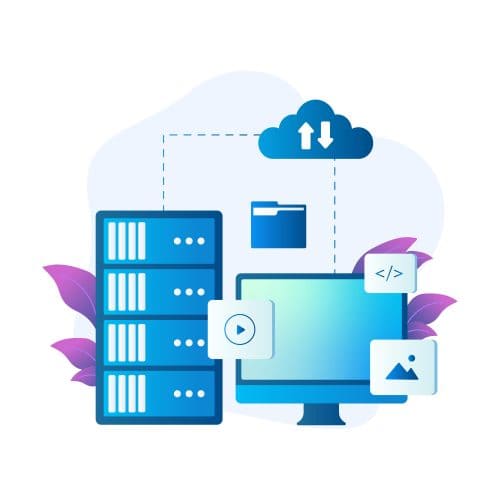Managing and updating schema objects in databases has become increasingly complex, which can lead to time-consuming and error-prone processes. To address this issue, the INFOFISCUS DDL Automation Tool provides a comprehensive solution that improves productivity, reduces errors, and streamlines the entire process. Specifically designed for Business Analysts and Data Analysts, this innovative tool automates creating, modifying, and managing database schema objects. With the click of a button, the INFOFISCUS DDL tool can generate DDLs, making it easier for data engineers, database administrators, and analysts to create, modify, and maintain different versions of the schema objects.

INFOFISCUS DDL Automation Features
The INFOFISCUS DDL Automation is exclusively designed for Snowflake database generation, allowing users to save valuable time and minimize the risk of errors when creating, modifying, or managing database schema objects. Additionally, the tool verifies coding standards and bug fixes, as well as compares database objects across multiple platforms. With the ability to generate DDLs, Data Analysts and Business Analysts can use the tool before involving database engineers and ETL developers, making it an indispensable asset for any organization that manages databases.
Why Choose INFOFISCUS DDL Automation?
The INFOFISCUS DDL Automation Tool is developed in Python and utilizes a Metadata excel sheet as input in the initial package. This Metadata is then converted into individual DDLs during the creation package. As a result, at the final package, users will have the necessary tables and views created in specified schemas, ready to run on Snowflake, the Data Cloud Platform. The INFOFISCUS DDL Automation Tool is user-friendly, even for individuals with limited technical expertise. Its intuitive graphical user interface simplifies the creation and modification of schema objects, while its powerful automation engine guarantees accurate and efficient execution of all changes.
- 99% Faster Analysis
- 5x Faster DDLs Conversion
- 95% Efficient Deployment
- With the capability to back up changes to the database schema, users can easily track and audit changes over time.
- Increase productivity by making schema object management faster and more streamlined.
- Rapid deployment of databases and schema objects, as it can execute operations faster than manual processes.
- Our tool automates code deployment to production with comprehensive testing and no manual intervention.

Frequently Asked Questions
DDL automation refers to automating creating and managing database definition language (DDL) scripts. DDL is a set of SQL commands used to define and manage the structure and schema of a database. This includes creating tables, defining relationships between tables, and setting constraints and indexes. DDL automation tools automate creating and managing these DDL scripts, making it faster and more efficient for developers to create and modify databases. DDL automation tools can generate DDL scripts automatically based on the specifications provided by developers, or they can modify existing scripts to make changes to the database structure. Some DDL automation tools also provide version control and rollback features, allowing developers to track changes to the database structure over time and revert to earlier versions if needed. This can help ensure consistency and reliability of the database structure and improve collaboration between developers working on the same database. Overall, DDL automation can help simplify and streamline creating and managing databases, reducing errors and increasing efficiency.
In ETL (Extract, Transform, Load) processes, DDL stands for Data Definition Language. DDL is a subset of SQL (Structured Query Language) used to define and manage the structure of a database. DDL statements create, modify, and delete database objects such as tables, indexes, views, and procedures. In an ETL process, DDL statements may be used to create or modify the structure of the target database where data will be loaded. For example, if the ETL process is designed to extract data from a source database and load it into a target database, the DDL statements may be used to create the tables and columns in the target database to match the schema of the source database. Overall, DDL plays a crucial role in the ETL process as it helps ensure that the target database is set up correctly to receive and store data.
DDL is used for the following purposes:
Creating tables: DDL is used to create new tables in a database. Tables define the structure and columns of a database, including data types and constraints.
Modifying tables: DDL is used to modify the structure of existing tables, such as adding or removing columns, changing data types, and adding or removing constraints.
Creating indexes: DDL is used to create indexes on tables, which can improve the performance of queries and searches.
Setting constraints: DDL sets restrictions on tables, such as primary keys, foreign keys, unique constraints, and check constraints, which help ensure data integrity and consistency.
Creating views: DDL is used to create views, virtual tables that present data from one or more tables in a particular way.
Granting permissions: DDL is used to grant permissions to users and roles for accessing and modifying database objects.
Overall, DDL is essential to managing a database and ensuring its integrity and consistency. DDL is used to define and modify the structure and schema of a database, as well as control access to the database objects.
SQL (Structured Query Language) is not typically considered an automation tool. Instead, SQL is a programming language used to manage and manipulate data in a relational database management system (RDBMS). SQL performs tasks such as creating and modifying tables, inserting and updating data, querying data, and generating reports.
While SQL can automate specific tasks within a database, such as updating multiple records at once, it is not typically used as a general-purpose automation tool for non-database-related tasks. Instead, SQL is a data management tool for data storage, retrieval, and analysis functions.
However, it’s worth noting that SQL can be integrated with other automation tools and scripting languages, such as Python or PowerShell, allowing for the automation of more complex data-related tasks. For example, SQL queries can be run automatically from within a Python script, allowing for the automated generation of reports or the automation of data transfer between systems.
SQL (Structured Query Language) automation refers to using tools or scripts to automate repetitive or complex tasks related to SQL databases. SQL automation can help improve efficiency, accuracy, and consistency in database management, by reducing the need for manual intervention.
Some common examples of SQL automation include:
Scripting: SQL scripts can be used to automate the creation of tables, views, indexes, and other database objects. Scripts can also automate data insertion, updates, and deletion operations.
Scheduled Jobs: SQL Server Agent allows you to organize and automate various database-related tasks, such as backup and restore operations, maintenance tasks, data import and export, and report generation.
Triggers: SQL Server triggers can automate the execution of specific actions when certain database events occur, such as data modification or insertion.
Stored Procedures: SQL stored procedures are precompiled database objects that can be called and executed from other applications or scripts. Stored procedures can automate complex tasks, such as data aggregation or reporting.
Overall, SQL automation can help simplify and streamline database management, allowing DBAs and developers to focus on higher-value tasks. It can also help improve data accuracy, reduce errors and inconsistencies, and increase productivity.
DB automation refers to using tools or scripts to automate tasks related to database management. DB automation can help improve the efficiency, accuracy, and consistency of database operations by reducing the need for manual intervention.
DB automation can include a wide range of tasks related to database management, such as:
Provisioning: DB automation can automate creating, configuring, and managing database instances or clusters. This can include server setup, database creation, user and permission management, and performance tuning.
Backup and Recovery: DB automation can help automate the process of creating and managing database backups and the recovery process in case of failures or disasters.
Monitoring: DB automation can help automate the monitoring of database performance, health, and availability. This can include tracking resource utilization, identifying performance bottlenecks, and proactively detecting and resolving issues.
Replication: DB automation can automate the process of replicating data across different database instances or clusters to ensure data consistency and availability.
Security and Compliance: DB automation can help automate enforcement security policies and regulatory compliance requirements, such as data encryption, access control, and auditing.
DB automation can be achieved using various tools and technologies, such as configuration management tools, scripting languages, APIs, and cloud services. DB automation can help improve productivity, reduce errors and inconsistencies, and ensure that databases are managed consistently and efficiently.




